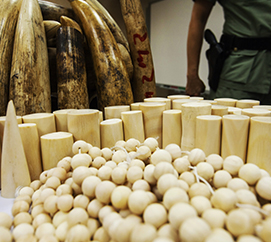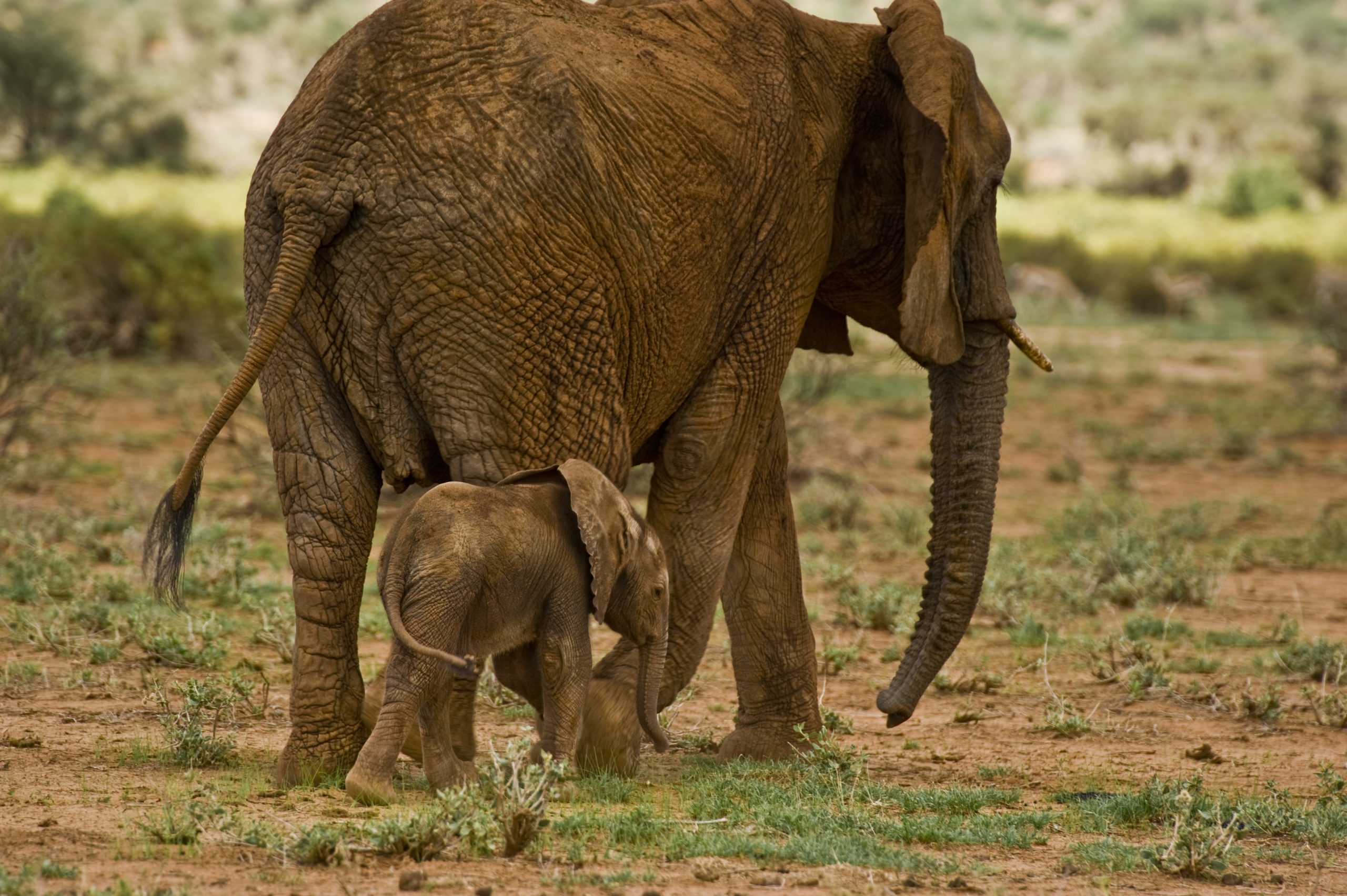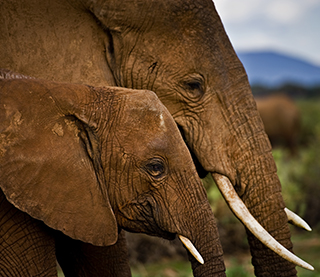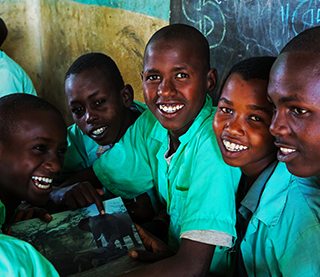
Stop Demand
Chinese superstar Li Bing Bing on why we should save elephants.
National ivory stockpile destruction unique sends an important and clear message that a nation is not tolerant of wildlife crime that threatens to wipe out the African elephant.
Save the Elephants
Highly-publicized national stockpile destructions have the possible benefit of starting a valuable conversation within a nation about its role in the illegal trade, inspire other countries to do the same with their stockpiles, and contribute to global public awareness about the plight of the elephant and the urgent threats to its existence. Moreover, recent destructions by Kenya, Gabon, the Philippines and the USA, demonstrate solidarity among these nations to fight the illicit trade.
Some critics have questioned why ivory should be destroyed and not used for raising revenue somehow for under-funded domestic programs, especially those focused on wildlife. As for the portion of national ivory stockpiles that is confiscated/seized ivory—no nation is allowed to sell seized ivory internationally according to CITES’ regulation. If it’s illegal for poachers and dealers, then it should be illegal for government departments and agencies, too. This demonstrates zero tolerance. Furthermore, destruction of seized ivory would simply be consistent with the international destruction procedures of other seized substances and articles (e.g. drugs, medicines, and counterfeit merchandise).
For nations whose ivory stockpiles present a large storage cost and security burden, destruction of ivory stockpiles lowers costs and prevents theft or misappropriation of ivory by corrupt individuals. Countries like Namibia and Burundi have been paying to store and secure large volumes of illegal ivory that can never be sold since around the time of the ban. In Namibia’s case it is approximately 30 tons that originated from Angola. Namibia estimated its storage costs at about 75,000 USD/year in a recent CITES proposal As for Burundi (a non-elephant range state), it holds over 80 tons; CITES documents form 2004 indicate that this ivory cannot be sold, whereas Burundi government statements claim that it continues to be a considerable legal burden to the government. In terms of stockpile thefts, countries such as Zambia and Mozambique have had large volumes of ivory stolen in recent years. So the issues storage and security issues are not trivial for some nations.
Destruction of stockpiles also helps eradicate any temptation for speculation of ivory releases awaiting the possibility of new trade regulations. This type of speculation now could raise current ivory prices, which in turn puts more pressure on living elephants.
Hand in hand, with ivory stockpile destruction is the need for a proper accounting of the stockpile itself. A number of CITES resolutions and decisions are aimed at bringing control to trade in ivory (whether legal trade or illegal trafficking), and stockpile inventory is an action that enhances overall control. CITES CoP16 Resolution 10.10 urges all Parties to: “maintain an inventory of government-held stockpiles of ivory and, where possible, of significant privately held stockpiles of ivory within their territory, and inform the Secretariat of the level of this stock each year before 28 February, indicating: the number of pieces and their weight per type of ivory (raw or worked); for relevant pieces, and if marked, their markings in accordance with the provisions of this Resolution; the source of the ivory; and the reasons for any significant changes in the stockpile compared to the preceding year”.
If stockpiles are not properly inventoried with the total number of tusks and ivory pieces and morphometrics of each tusk accounted for then that are prone to corruption. For example, any potential ivory “leakages” from national stockpiles could be covered through replacement of the missing large tusks with new smaller ones from freshly killed elephants. This suggests that large, unsecure stockpiles present a tangible risk to living elephants today.
STE’s main aim for involvement in the national ivory stockpile inventory processes would be to help ensure such inventories were done to the highest scientific standards to meet the CITES requirements. Another aim would be to hopefully gain additional scientific information about the elephant source populations supplying the ivory. Algorithms have been developed to determine the age of an elephant from the size/mass of its tusk. Elephant subspecies, gender and cause of death can also be determined from tusk characteristics in some instances. DNA samples taken from seized tusks could be used to determine the actual origin of those tusks Knowing this type of demographic information about the animals that constitute the stockpile could contribute to our understanding of the impacts of the illegal trade on the species (in terms of seized or confiscated ivory) and mortality trends (in terms of tusks from elephants that died as a result of Problem Animal Control and natural mortality) at local scales, but also regional and continental scales. Presently, international and even national-level policy decision about African elephant management rest largely on the knowledge about the scope and scale of the impacts of the illegal ivory trade on the African elephant resulting from data from the CITES MIKE and ETIS programs. Ivory stockpiles offer a unique opportunity for an additional hard data stream that could help increase the resolution on the impacts of the illegal trade on the species that has been largely untapped. Knowing the DNA origin of seized tusks could help authorities identify poaching hotspots and focus enforcement activities.
Lastly and perhaps just as importantly, STE sees stockpile inventory as a valuable and necessary first step toward eventual stockpile destruction.

Chinese superstar Li Bing Bing on why we should save elephants.
The fate of elephants is in the balance. The record price of ivory has attracted organised crime, rebel militias and even terrorist groups, fuelling a surge of poaching across the continent. Without the outstanding support and generosity of our donors, STE would not be able to continue securing a future for the elephants. We urgently need your support, while there is still time. You can be of vital assistance by donating to either our core funds or to any of our projects.
Over the last years our world-leading conservation efforts have been possible thanks to the dedication and generosity of loyal supporters. To join them you can donate in a number of ways:

Elephants are fast disappearing from the wild. Without urgent, international action they could be gone within a generation. The Elephant Crisis Fund provides rapid, catalytic support for the most effective projects designed to stop the killing, thwart traffickers and end the demand for ivory. 100% of all donations reach the field.

Save the Elephants is funded almost entirely by private donations. It is only through the generous support of donors that we are able to continue our important elephant conservation work. We rely entirely on funds, grants and donations from around the world, so thank you for helping us to secure a future for these fascinating creatures.

Our unique brand of conservation education encourages students to become ambassadors of their rich environment. We also give opportunities to friends around the world to help educate young minds and improve the infrastructure of their schools. Sponsor a child & help build a future for wildlife.
The fate of elephants is in the balance. The record price of ivory has attracted organised crime, rebel militias and even terrorist groups, fuelling a surge of poaching across the continent. Without the outstanding support and generosity of our donors, STE would not be able to continue securing a future for the elephants. We urgently need your support, while there is still time. You can be of vital assistance by donating to either our core funds or to any of our projects.
Find Out How